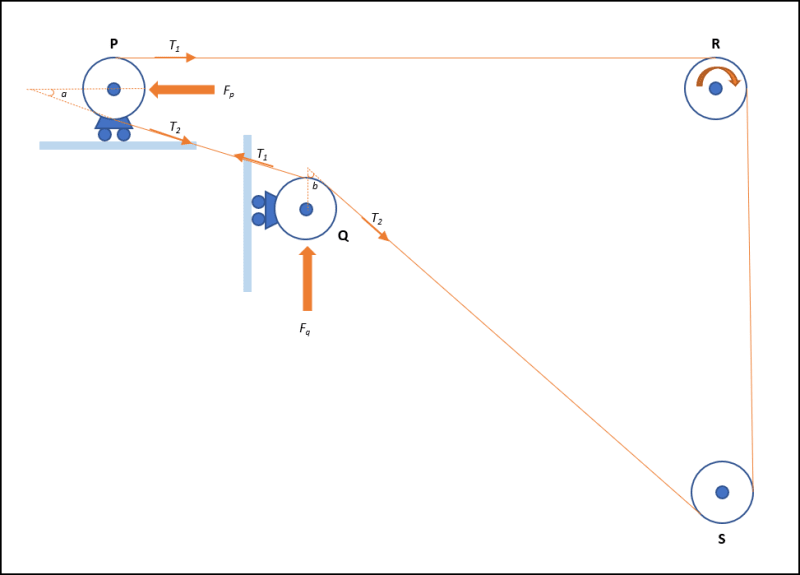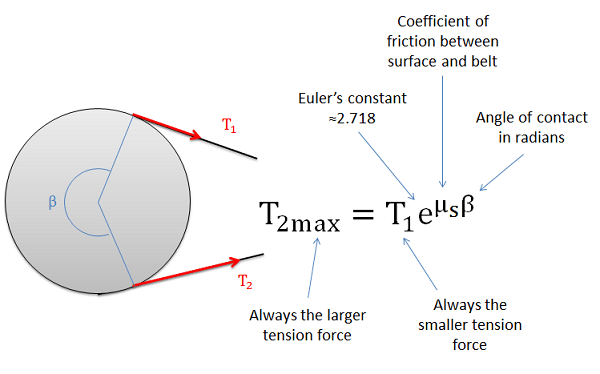squeakychair
Mechanical
- Sep 1, 2020
- 4
In this conveyor belt configuration, rollers P and R are horizontally aligned, while rollers R and S are vertically aligned, in a triangular arrangement. Roller Q then bends the belt between P and S.
Roller Q is free to slide vertically, while roller P slides horizontally. The remaining rollers R and S are fixed to their position. Of course all the rollers rotate with zero friction to allow the belt to move.
The system is in static equilibrium, held together by an applied horizontal force Fp at P and vertical force Fq at Q.
If I know all dimensions and geometrical relationships (angles, distances), how would I relate the belt tension T, and the external forces Fp & Fq?

Roller Q is free to slide vertically, while roller P slides horizontally. The remaining rollers R and S are fixed to their position. Of course all the rollers rotate with zero friction to allow the belt to move.
The system is in static equilibrium, held together by an applied horizontal force Fp at P and vertical force Fq at Q.
If I know all dimensions and geometrical relationships (angles, distances), how would I relate the belt tension T, and the external forces Fp & Fq?



